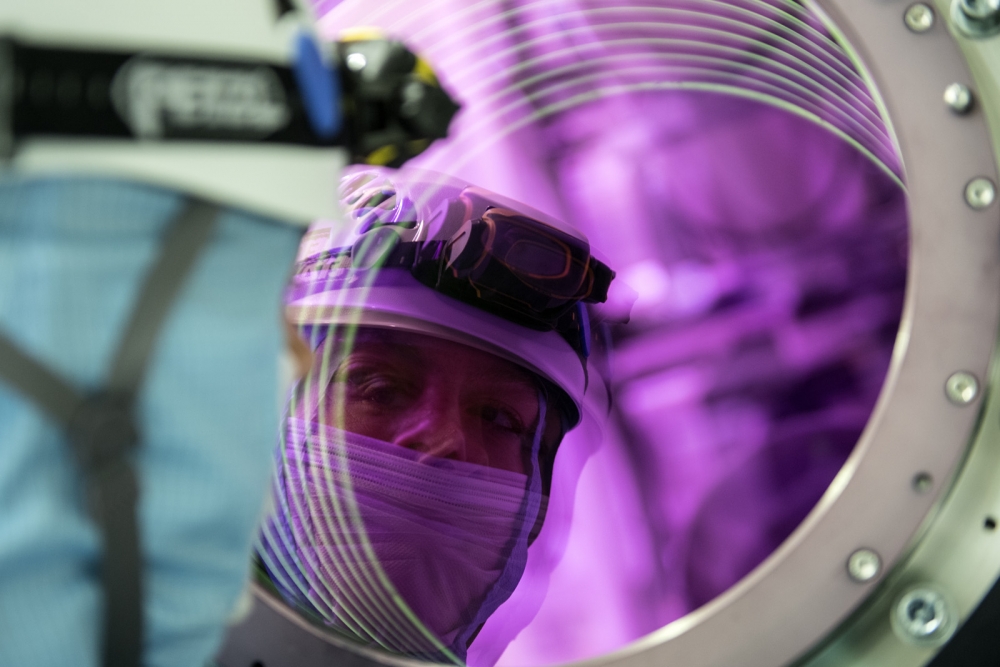Orion Laser
The Orion laser plays a crucial role in supporting the safety, reliability and performance of nuclear warheads throughout their lifecycle.
Our scientists use the Orion laser facility to research the high energy density plasma physics phenomena, which occur at the heart of a nuclear explosion or the interior of a star.
What does Orion do?
The Orion laser facility is the size of a football stadium and contains a large neodymium glass laser system operated in ultra-clean conditions. It delivers some of the most powerful laser beams ever created.
The laser’s beams are a combination of 10 ‘long-pulse’ beams, which are a billionth of a second in duration, and two petawatt ‘short-pulse’ beams. We direct them into a target hall, where we conduct experiments in a four-metre diameter target chamber operated at high vacuum.
The Orion laser provides a comprehensive suite of optical, particle, and x-ray plasma diagnostics to understand the plasma conditions created through the laser interaction.
A typical design and manufacture of a target is no greater than a couple of millimetres in size. We manufacture our targets from metals or plastics using micro-engineering techniques.
“Our targets are characterised by our specialist teams, based on experimental requirements and specifications. Their components are typically a fraction of the width of a human hair or the size of a grain of sugar.” Josie, plasma physicist
Our teams work with experts across AWE and collaborate with their equivalent university teams and the DoE National Laboratories in the US in particular at the National Ignition Facility (NIF) at Lawrence Livermore National Laboratory.
Opening up the Orion laser
We allocate up to 15% of Orion’s system time each year for cutting-edge collaborative experiments with our academic partners.
Find out more